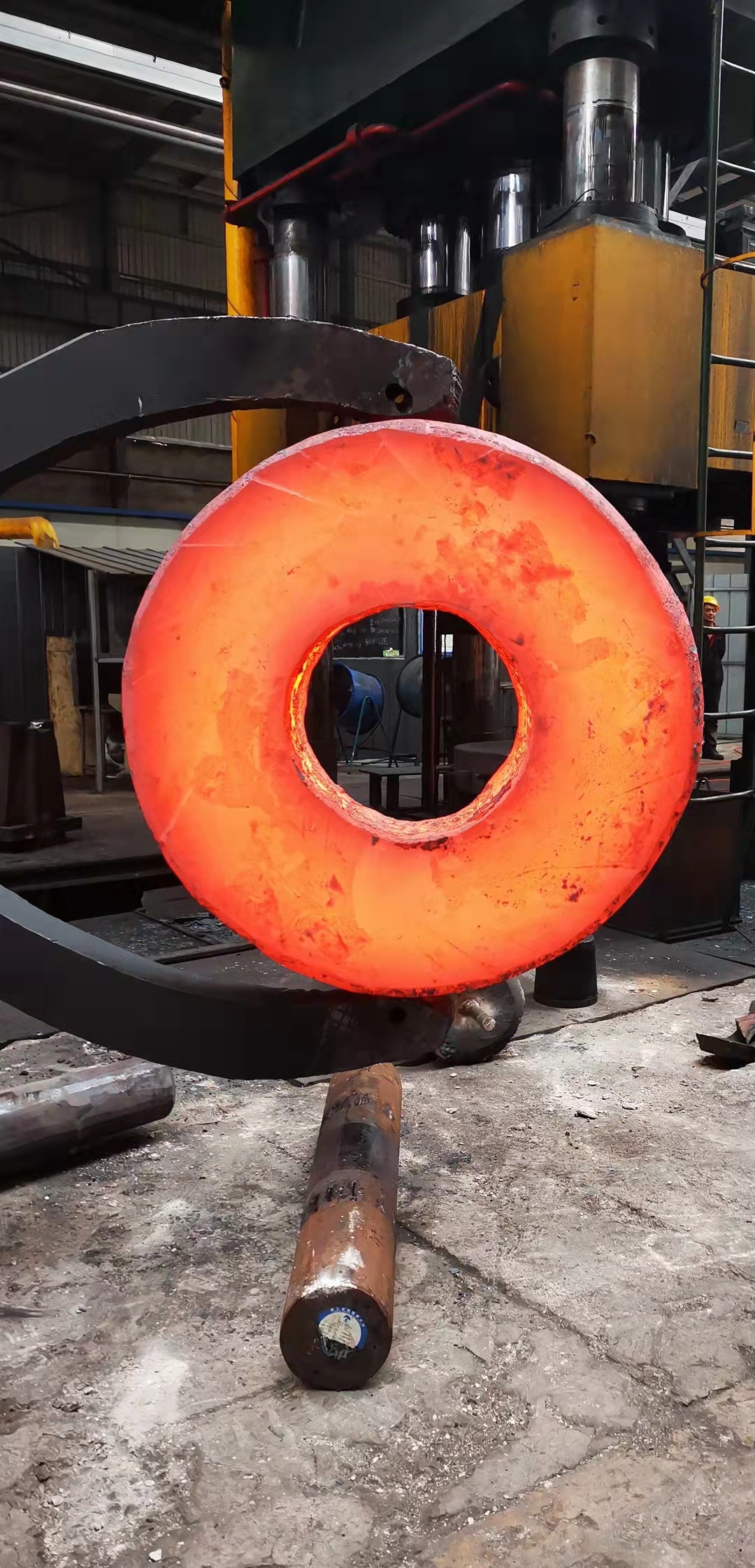Forging process of ring forgings
2022-10-21
Ring forgings are widely used in industry. The forging process of ring forgings is composed of four parts. The following mainly to tell you about some ring forging forging process, I hope you can learn.
The forging process of ring forgings mainly consists of the following processes:
Pier thick, drawing long, punching, reaming.
The main difference between free forging and ring forging is in the process of hole reaming. In the production of ring forgings, the free forging is usually used by horse bar and the ring forging is mainly used by rolling.
Ring rolling process of ring forgings is a plastic processing process in which ring rolling machine (ring rolling machine, ring rolling mill and hole reaming machine) is used to produce continuous local plastic deformation of rings, and then the wall thickness is reduced, the diameter is expanded and the section profile is formed. The stress, strain and deformation flow of rolling reaming are the same as that of mandrel reaming. Its characteristics are: the tool is rotating, deformation is continuous, that is, ring billet rolling. In the process of rolling and expanding the hole, the pressure is usually small, so it has the characteristics of surface deformation. Ring rolling is a continuous local shaping process, which is the cross and combination of rolling technology and mechanical manufacturing technology. Compared with the traditional free forging process, die forging process, etc., ring rolling has remarkable technical and economic characteristics.
In the free forging of ring forgings, the horse bar is used to expand the hole. The stress and strain situation of horse bar reaming is approximately drawing length, which is different from the long axis drawing length. It is the drawing length of annular forging billet along the circumferential direction, which is local loading and overall force. The metal in the deformation zone flows in tangential and width directions when the horse bar is reamed. The metal in the deformation area mainly flows along the tangential direction, and the inner and outer diameters increase. The general wall of the forging on the horse bar is thinner, so the resistance of the metal tangential flow in the outer deformation area is far small width direction, and the contact surface of the horse bar and the ring forging is arc, which is conducive to the metal flow along the tangential direction. Therefore, when the horse bar reaming, the forging size change is the wall thickness thinning, inner and outer diameter expansion, width (height) direction slightly increased. Therefore, in the small batch, small ring parts, the use of horse bar hole expansion is more suitable for forging ring forgings.

The forging process of ring forgings mainly consists of the following processes:
Pier thick, drawing long, punching, reaming.
The main difference between free forging and ring forging is in the process of hole reaming. In the production of ring forgings, the free forging is usually used by horse bar and the ring forging is mainly used by rolling.
Ring rolling process of ring forgings is a plastic processing process in which ring rolling machine (ring rolling machine, ring rolling mill and hole reaming machine) is used to produce continuous local plastic deformation of rings, and then the wall thickness is reduced, the diameter is expanded and the section profile is formed. The stress, strain and deformation flow of rolling reaming are the same as that of mandrel reaming. Its characteristics are: the tool is rotating, deformation is continuous, that is, ring billet rolling. In the process of rolling and expanding the hole, the pressure is usually small, so it has the characteristics of surface deformation. Ring rolling is a continuous local shaping process, which is the cross and combination of rolling technology and mechanical manufacturing technology. Compared with the traditional free forging process, die forging process, etc., ring rolling has remarkable technical and economic characteristics.
In the free forging of ring forgings, the horse bar is used to expand the hole. The stress and strain situation of horse bar reaming is approximately drawing length, which is different from the long axis drawing length. It is the drawing length of annular forging billet along the circumferential direction, which is local loading and overall force. The metal in the deformation zone flows in tangential and width directions when the horse bar is reamed. The metal in the deformation area mainly flows along the tangential direction, and the inner and outer diameters increase. The general wall of the forging on the horse bar is thinner, so the resistance of the metal tangential flow in the outer deformation area is far small width direction, and the contact surface of the horse bar and the ring forging is arc, which is conducive to the metal flow along the tangential direction. Therefore, when the horse bar reaming, the forging size change is the wall thickness thinning, inner and outer diameter expansion, width (height) direction slightly increased. Therefore, in the small batch, small ring parts, the use of horse bar hole expansion is more suitable for forging ring forgings.

Previous:Happy Diwali
X
We use cookies to offer you a better browsing experience, analyze site traffic and personalize content. By using this site, you agree to our use of cookies.
Privacy Policy



